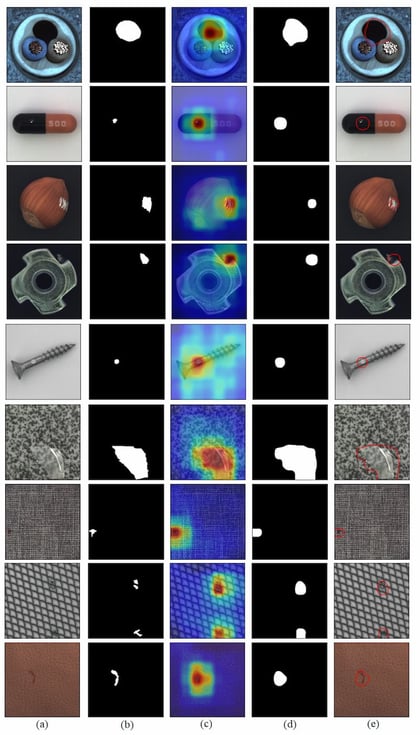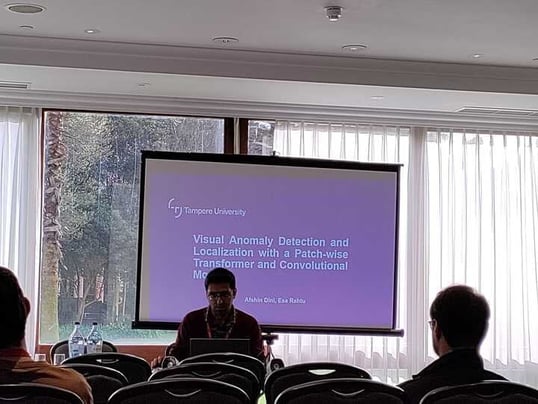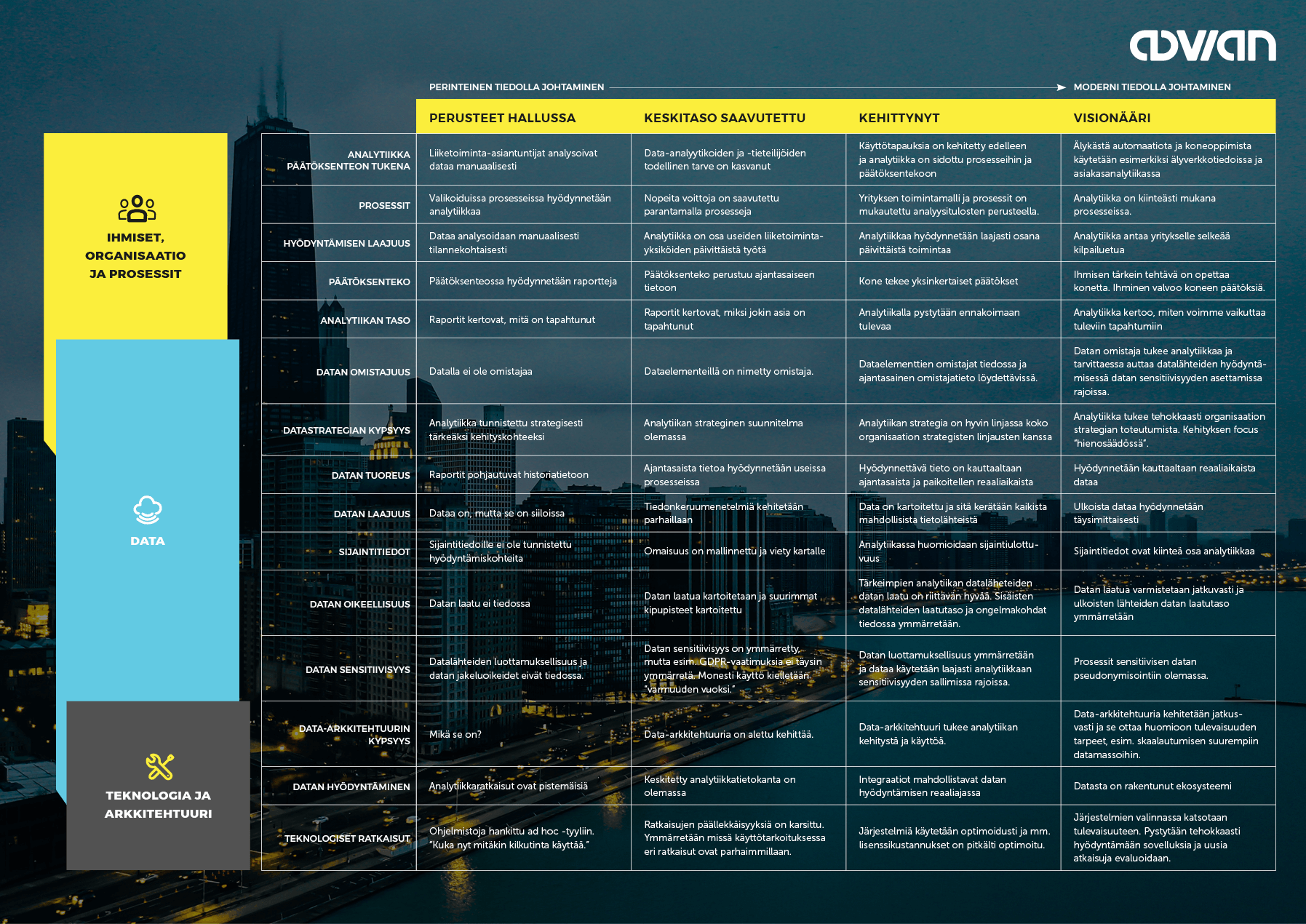As technology continues to evolve at an exponential rate, machine learning has become increasingly important in various industries. For instance, Edge AI, which combines machine learning with edge computing has seen a boom in recent year. Machine learning engineering is like teaching a toddler to walk. You start by designing, building, and deploying machine learning systems that can crawl, and then you watch as they learn to walk on their own (with a few stumbles along the way). Machine learning engineers use mathematical algorithms and statistical models to train these systems to identify patterns, make predictions and decisions.
In this article, our machine learning engineer Afshin Dini tells more about how he has applied machine learning and -vision in visual anomaly detection.
Applying machine learning in anomaly detection
Visual anomaly detection, also known as AD, is a field of study in machine learning and computer vision that focuses on detecting unusual or anomalous patterns or objects in visual data, such as images or videos. Generally, an anomaly is defined as a data point or a pattern that deviates significantly from the norm or expected behaviour, and visual anomaly detection aims to identify such anomalies in visual datasets.

Where can you use machine learning in anomaly detection?
Anomaly detection is highly applicable in real-world scenarios across a wide range of domains. Many industries and fields can benefit from the ability to automatically detect defects, leading to improved efficiency, safety, and decision-making. Some real-world applications of visual anomaly detection include:
- Manufacturing and quality control: Used in manufacturing and production settings to identify defects or anomalies in products or components, leading to improved quality control, reduced scrap or rework, and increased productivity.
- Energy and utilities: Applied in energy and utilities industries for monitoring infrastructure conditions, such as detecting equipment failures, leaks, or abnormal behaviors in power grids, pipelines, or other critical infrastructure, leading to improved maintenance and reliability.
- Security and surveillance: Commonly used in video surveillance systems for security and safety purposes, such as detecting intrusions, thefts, or suspicious activities in public spaces, airports, banks, or other high security areas.
- Healthcare: Applied to medical imaging for early detection of diseases, tumors, or abnormalities in X-rays, CT scans, MRI scans, or other medical images, aiding in medical diagnosis and treatment planning.
These methods can also be used in other domains such as retail and e-commerce to detect shoplifting and fraudulent transactions, smart city applications to monitor traffic or infrastructure conditions, and Internet of Things (IoT) to detect unusual events or behaviors in smart homes.
Why use machine learning for detecting anomalies?
Detecting anomalies is a challenging problem due to some inherent characteristics of defects such as unpredictability, unknown-ness, diversity, and rarity off defects. In other words, anomalies are unknown before they occur according to which detecting an unknown thing beforehand is a difficult task.
Moreover, they mainly occur rarely in real-world, and they may also appear in different size, shapes, colors, and forms which makes the detecting process more difficult. Machine learning approaches can deal with these challenges more properly and with better performance compared to the old-fashioned methods.
Developing a new anomaly detection method
At Advian, not only we try to complete our job responsibilities and daily tasks as machine learning engineers but also to extend our knowledge in various fields in order to be able to propose better solutions for different problems. In this regard, I recently developed a new method for the image anomaly detection problem based on the Transforms (Transformer (machine learning model) - Wikipedia) which are the state-of-the-art ML models for many purposes, nowadays.
This new model not only can deal with anomaly detection challenges and have high accuracy, but also it can specify the exact locations of the anomalies in the images. As an example, you can see some of the results of applying our model for quality control of manufacturing products above.
We presented our method in 18th International Conference on Computer Vision Theory and Application (VISAPP) in Lisbon in February 2023 and our whole paper can be found here.

Final thoughts
I try to learn more about new machine learning approaches in order to stay at the forefront of this exciting field. To reach this goal, I try to find the potential cases of using machine learning in many industries by constantly learning about new technologies and models and thinking about how they can be applied in different real-world applications. I am sure that is a challenging and exciting path to travel.
My next step in this field
My next step in this field would be to continue learning about anomaly detection approaches and try to develop AD methods for applications containing 3D images, hyperspectral images, and time series data as I believe that many applications would deal with these types of data in near future.
What I've learned the hard way
It is important to keep in mind that failure is an essential part of the learning process, and it can provide valuable insights that help us to improve and achieve success in the future. In many cases, the only way to learn and grow is through trial and error, and we should not be discouraged by setbacks or mistakes. Instead, we should view them as opportunities to learn and improve. As it is said “failure is the first step to success.”
Interested in a career at Advian?
Perfect! Check out our career page and get to know us 👇
Topics: Machine Learning, People, Hyperspectral imaging, Career













